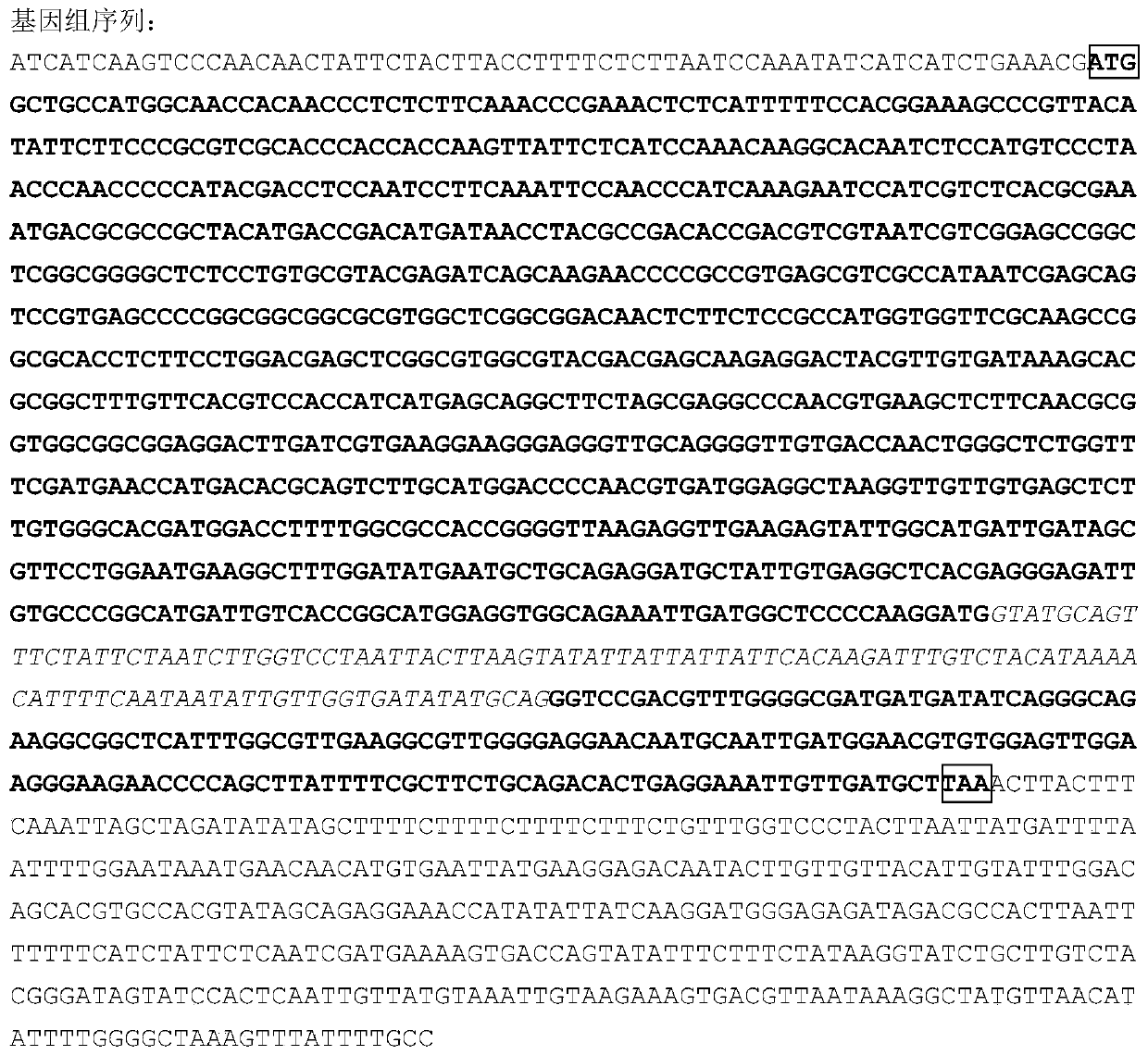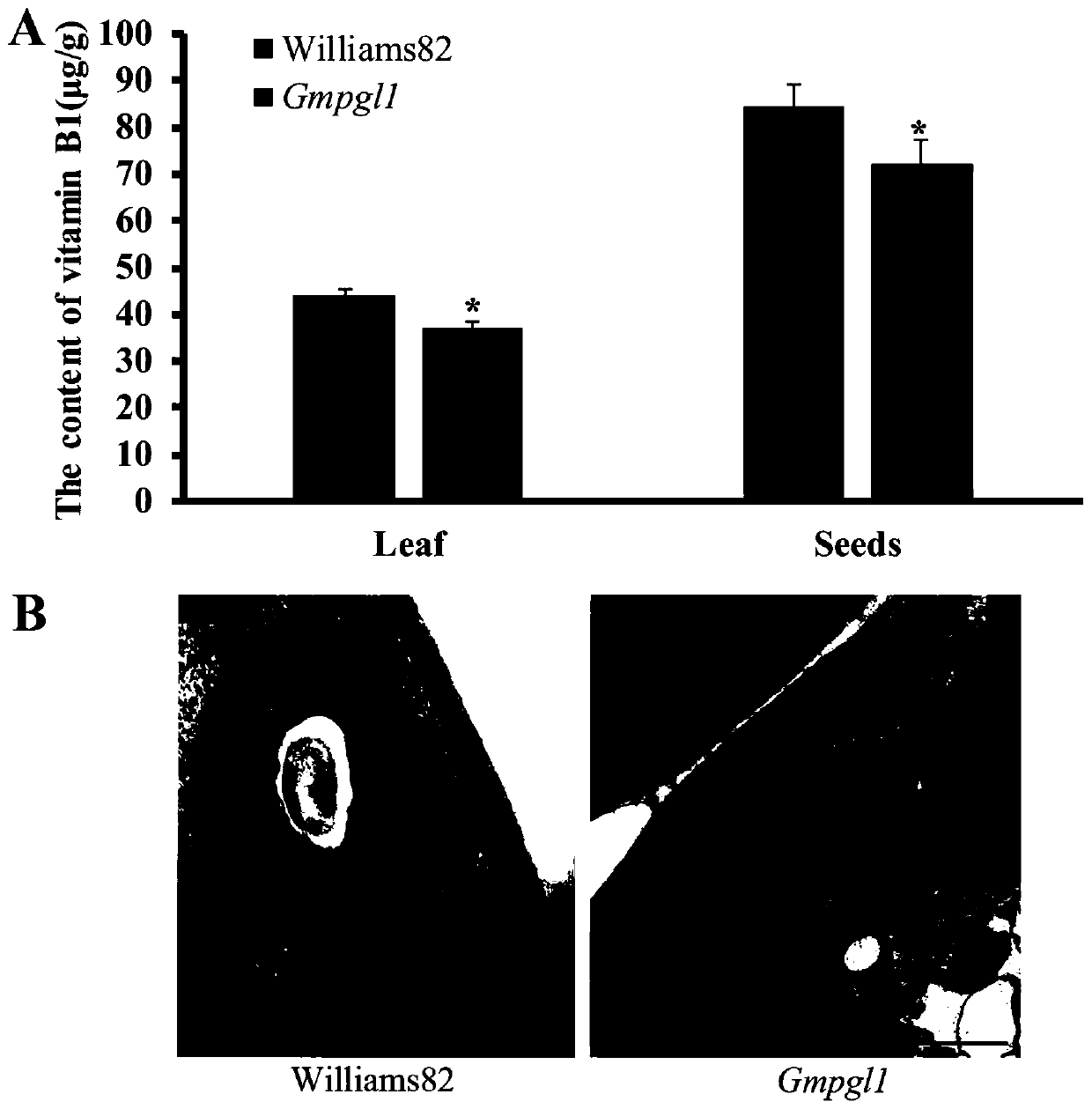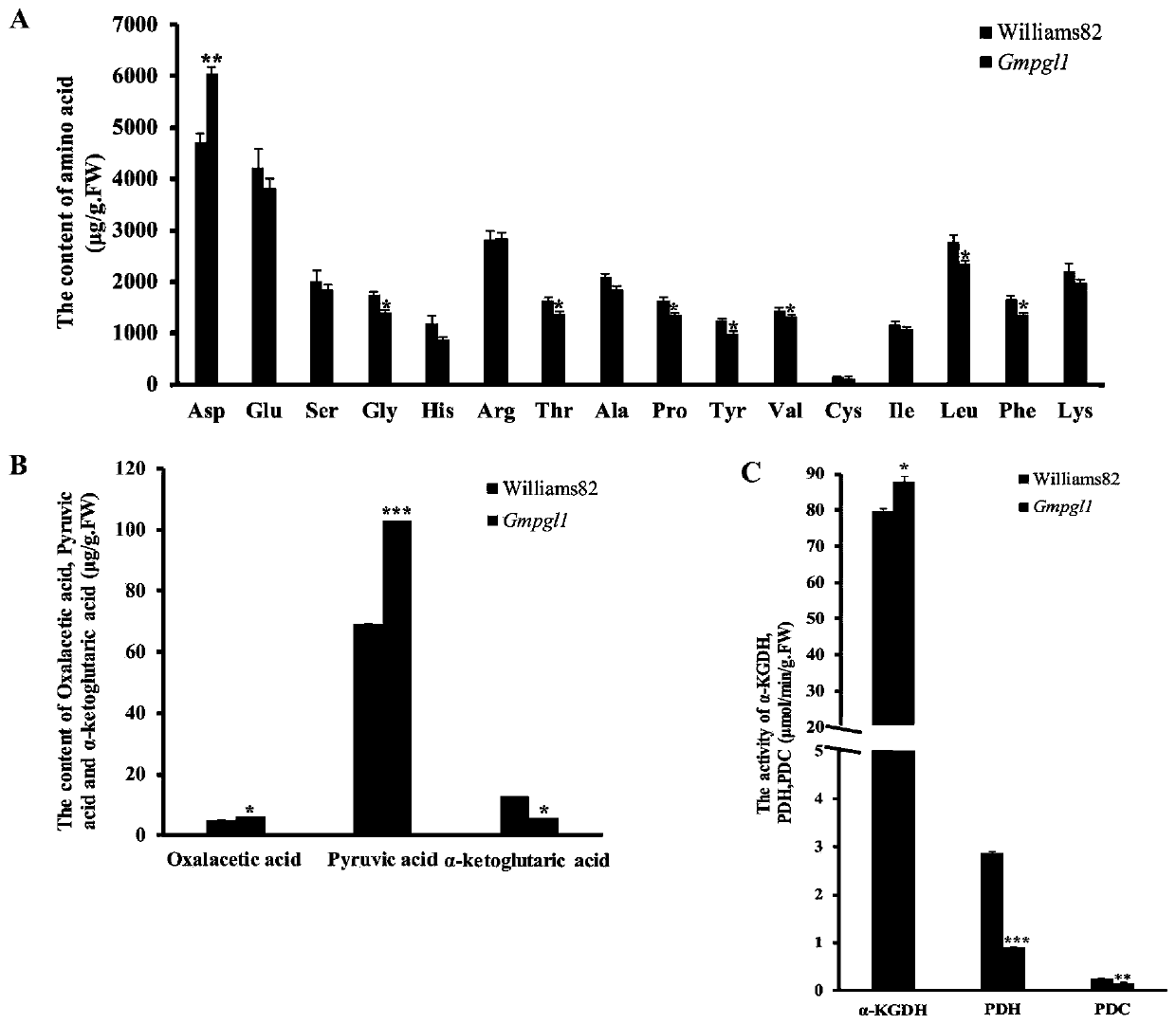Gene for controlling content of soybean vitamin B1 and application of gene
A gene and soybean technology, applied in the field of plant molecular biology and genetic engineering, can solve the problems affecting the normal growth and development of plants, affecting the plant glycolysis pathway, activity and content, and achieve the regulation of chloroplast development and the improvement of soybean amino acid content , the effect of good application prospects
- Summary
- Abstract
- Description
- Claims
- Application Information
AI Technical Summary
Problems solved by technology
Method used
Image
Examples
Embodiment 1
[0040] Example 1 Isolation and structural analysis of GmPGL1 gene in soybean
[0041] (1) Isolation of genes
[0042]The mRNA was extracted from young leaves of soybean variety Williams 82, and the first strand of cDNA was synthesized using the mRNA as a template and Oligo(T)17 as a primer. Then, using the first strand of the cDNA as a template, primers OL8172 (5'-TCCCCCCGGGATGGCTGCCATGGCAACCACA-3') and primers OL8173 (5'-CGCGGATCCTTAAGCATCAACAATTTCCTCAGTG-3') were used for PCR amplification to obtain a GmPGL1 gene with a length of 1056 bp The cDNA fragment was cloned into the pEASY-Blunt vector (TransGen, Beijing, China) and named pEASY-Blunt-GmPGL1.
[0043] The GmPGL1 CDS sequence contained in pEASY-Blunt-GmPGL1 is shown in SEQ ID NO: 1, with a total of 1056 bp, which encodes a protein of 351 amino acids (SEQ ID NO: 2).
[0044] (2) Gene structure analysis
[0045] Using the young leaves of Williams 82 as materials, extract the DNA from the young leaves, use the genomic ...
Embodiment 2
[0046] Example 2 Soybean GmPGL1 gene regulates the content of vitamin B1
[0047] In order to study the influence of vitamin B1 on the growth and development of plants, the present invention obtained a mutant with lighter leaf color through EMS mutagenesis, which was named Glycine max pale green leaf 1 (Gmpgl1), sequenced by BulkedSegregant Analysis (BSA) Methods A mutant of the target gene GmPGL1 was obtained, which was missing a base T in the 292nd position of the CDS region, which resulted in premature termination of the gene coding.
[0048] The content of vitamin B1 in wild type and Gmpgl1 mutant leaves and seeds was determined by HPLC (15 leaf repeats from 3 wild type Williams82, 30 seed repeats, 15 leaf repeats from Gmpgl1 mutant, 30 seed repetitions), the average vitamin B1 content in the wild type Williams82 and Gmpgl1 mutant leaves were 43.87μg / g, 37.04μg / g, respectively, in the wild type 15 leaves, 30 seed repetitions, the vitamin B1 content of each leaf There was ...
Embodiment 3
[0049] Example 3 Functional Verification of Soybean GmPGL1 Gene
[0050] (A) Soybean GmPGL1 gene regulates plant chloroplast development
[0051] Take the leaves of wild type Williams82 and Gmpg1 mutants at the same growth period and at the same growth position in the growth chamber (20 wild-type and mutant leaves were collected), and cut the leaves into 1cm×1cm long strips with a scalpel , put it into 4% glutaraldehyde, press the sample on the bottom of the fixative with cotton, put it in 4°C overnight; fix the sample with osmic acid, 2h, 4°C; rinse the sample 3 times with distilled water, 15min each time; %, 70%, 80%, and 95% ethanol for gradient dehydration of the sample, 10 min each time, and then mixed with 95% ethanol and 95% acetone 1:1 for 10 min. Dehydrate with 100% acetone twice, 20min each time. Finally, replace acetone with propylene oxide and dehydrate once for 20 minutes; mix 1:1 with propylene oxide and embedding agent (SPI-PON 812), and pre-soak the sample fo...
PUM
 Login to View More
Login to View More Abstract
Description
Claims
Application Information
 Login to View More
Login to View More - R&D
- Intellectual Property
- Life Sciences
- Materials
- Tech Scout
- Unparalleled Data Quality
- Higher Quality Content
- 60% Fewer Hallucinations
Browse by: Latest US Patents, China's latest patents, Technical Efficacy Thesaurus, Application Domain, Technology Topic, Popular Technical Reports.
© 2025 PatSnap. All rights reserved.Legal|Privacy policy|Modern Slavery Act Transparency Statement|Sitemap|About US| Contact US: help@patsnap.com



